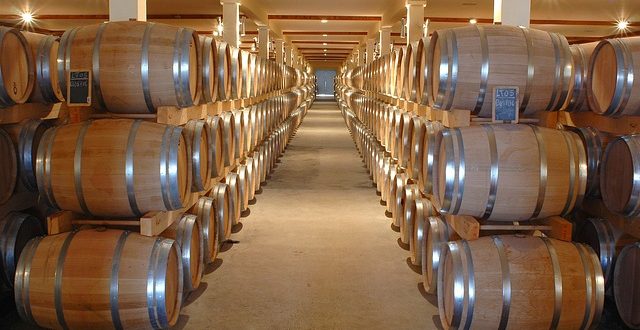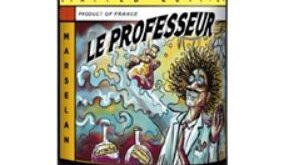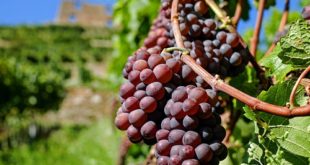Winemaking is a long process involving many stages: harvesting, fermentation, pressing, filtration and bottling. Although most wine is grape based, other fruits or non-toxic plants can be used. Mead for example, is a wine but honey is the main ingredient. In this article we will keep to grape types.
Oenology is the science of winemaking, it’s generally comprising of two categories:
- Sparkling wine, being with carbonation
- Still wine, being without carbonation
The grape
The Grape is at the heart, it’s quality, it’s variety, where and how it grows all influence the resulting wine.
It is of high importance, more so than any other part of the winemaking process. Whilst the influence of the grape’s quality and type are easy to appreciate, the concept of Terroir is harder to grasp. Terroir is a French term relating to the overall environment where the grape grows. At the simplest level mostly the soil and climate, more inclusively including, the time of harvest, soil minerals and acidity, and the pruning method. Some are cynical of the concept, citing it as a marketing tool, pointing out that with modern viniculture growers can simulate most conditions. No one though denies that soil and climate influence the grape.
Harvesting takes place from early September to early November, in the northern hemisphere. In the southern hemisphere, harvesting takes place from mid February to early March.
Red
Red wine is made from the pulp of red or black grapes that go through fermentation together with the grape skins.
White
White wine is made by fermenting juice which is pressed from white grapes. It can also use the red grape pulp but without the grape skin.
Rose
Rose wines are made from red grapes. The juice is allowed to stay in contact with the dark skins, long enough to pick up a pinkish colour but little enough not to pick up the tannins contained in the skins.
Harvesting
The wine maker decides when to harvest the grapes, taking into account: the level of sugar, acid and pH of the grapes. Other pointers are; ripeness, berry flavour and the development of tannins, e.g. seed colour and taste.
Mechanical harvesting
Mechanical harvesting involves large tractors straddling grapevine trellises by using plastic or rubber rods. These rods strike through the grapevine, dislodging the grapes from the rachis. The advantage is that the mechanical harvesters cover a large area of vineyard ground, in rather a short period of time.
Being non-selective, non-grape material such as leaves and leaf stems, get amongst the harvest as do mouldy grapes, canes, metal debris, rocks and even small animals and bird nests. Most winemakers will clear these materials before mechanical harvesting starts.
Mechanical harvesting is more common in countries such as Australia and New Zealand, purely due to general labour shortages.
Manual harvesting
Manual harvesting is the hand picking of grapes from the grapevines. Its advantage is that the workers have the knowledge to pick only the ripe grapes and to leave the not so ripe grapes and grapes containing bunch rot behind. This can be quite an effective way to pick grapes as it prevents any poorer quality fruit from contaminating the wine.
Destemming
Destemming is the separating of stems from grapes. Its purpose is to lower the development of tannins and vegetal flavours in the resulting wine, it differs for red and white winemaking. Generally for whites, the stems are kept intact throughout the crushing process. For red wine, the stems are removed before fermentation as they are high in tannins and can also give off a vegetal aroma. Stems can be left on if they contain less tannins than required.
Crushing
Crushing uses the procedure of softly squeezing the berries, breaking the skins to start, to release the contents of the berries. Few traditional and small wineries still crush by walking on them barefoot.
For whites, the fruit is crushed and the stems are placed in the press along with the berries. The stems in the mix aid the pressing, allowing juice to flow past flattened skin. This then builds up around the edges of the press. For reds, the grapes are past between two rollers which squeeze the grapes, separating the skin and pulp. With some delicate red wines such as Pinot Noir or Syrah, all or part of the grapes maybe left un-crushed, encouraging the release of fruity aromas through partial carbonic maceration.
Red wines are produced by destemming and crushing the grapes into a tank, leaving the skins in the juice throughout the fermentation process. It is possible to produce white wines from red grapes by the fastidious pressing of un-crushed fruit such as sparkling wine from Pinot Noir, a red vinifera grape.
White wines are processed without destemming or crushing. Instead they are transferred from their picking bins, directly to the press. This avoids any extraction of tannins from the skins or grape seeds, as well as maintaining good juice flow through a medium of grape clusters rather than loose berries.
For Rose wines, the dark skins are left in contact with the juice, just long enough to extract the colour that the winemakers desire. It is then pressed and fermented as if the wine maker was making a white wine.
Primary fermentation
As the natural yeast normally present on the grapes can give unpredictable results, cultured yeast is often added. With wild yeasts, sometimes sugar remains unfermented resulting in a sweet instead of dry wine. Wild ferments can also produce acetic acid which is vinegar.
Throughout the primary fermentation process, yeast cells feed on the sugars in the wine and multiply, making carbon dioxide, gas and alcohol. The temperature is crucial during this process, as it affects the speed of the fermentation as well as the taste of the end product. The temperature for red wines should be between 22C and 25C and for white wines, between 15C and 18C. A gram of sugar s converts to half a gram of alcohol. For example, to get a 12% alcohol concentration, the wine needs to contain 24% of sugar.
Pressing
Pressing is where pressure is applied to the grapes in order to separate wine from grapes and grape skins. It can be optional, for if the grapes are crushed there is a large amount of juice instantly released which can be used for winemaking. This juice is called “free-run-juice”, and is a higher quality than the pressed juice. However, the majority of wineries use presses in order to increase their production, as pressed juice can represent between 15-30% of the total juice volume from the grape.
Presses work by placing the whole grape or the grape skins between a rigid and a moveable surface, slowly decreasing the volume between the two surfaces. Modern presses these days, tend to follow a pressing program which dictates the duration and pressure at each press cycle. Sometimes winemakers choose pressures where they can separate the stream of pressed juice, known as “press cuts”. When the pressure increases on the grape skins so too does the amount of tannins extracted into the juice, making the wine tannic or harsh.
Before modern presses came about most presses were basket presses, made from wood, operating manually. Basket presses are made from a cylinder of wooden slats on top of a fixed plate, with a moveable plate that can be forced downwards. The grapes would be loaded into the wooden cylinder with the top plate put in place. It would then be lowered until the juice began to flow from the wooden slats.
Red wines are pressed after the primary fermentation, separating the skins and other solids from the liquid. With white wines, the liquid is separated from the pulp before fermentation. With rose, the skins are kept in contact for a shorter period in order to give colour to the wine.
Pigage
Pigage is a French winemaking term which involves the stomping of grapes in open fermentation tanks. This technique is used to make certain types of wine, and the process involves grapes being put through a crusher and then poured into open fermentation tanks. When fermentation begins, carbon dioxide gases are released, pushing the grape skins to the surfaces. This sheet of skins is known as the cap. As the skins are the source of the tannins, the cap needs to be mixed through the liquid each day, which is traditionally done by stomping through the vat.
Cold and heat stabilisation
This process is used to reduce tartrate crystals in wine. They look like grains of clear sand and can also be known as “wine crystals” or “wine dimonds”. They often look like sediment in the wine, however, they are not. Throughout the cold stabilisation process, the temperature of the wine is dropped near to freezing for 1 to 2 weeks. This causes the crystals to separate from the wine and stick to the sides of the container holding the grapes. As the wine is drained from the containers, the tartrates are left behind. Throughout the heat stabilization, unbalanced proteins are removed by adsorption onto bentonite, preventing them from precipitating in the bottled wine.
Secondary fermentation and bulk aging
The second fermentation and aging process is very slowly, taking 3 to 6 months. The wine is kept under an airlock in order to protect the wine from oxidation. During this process, proteins from the grape are broken down and the remaining yeast and other fine particles are allowed to settle. The result is that the original cloudy wine becomes clear.
The secondary fermentation generally takes place in large stainless steel containers or oak barrels, depending on the aim of the winemakers. Unoaked wine is usually fermented in a barrel made out of stainless steel, or some other type of material which has no influence with the final taste of the wine. Depending on the required taste, the wine could be fermented just in stainless steel or in stainless steel and then briefly put into oak. Cheaper wine is often made from adding oak as chips and using a non-wooden barrel.
Malolactic fermentation
Malolactic fermentation is a process carried out by bacteria where tart-tasting malic acid, naturally present in grape pulp, is converted to softer-tasting lactic acid. The resulting wine is softer in taste and has greater complexity. This process is used in most red wines and is optional for white wines.
Laboratory tests
Tests are done throughout the winemaking process, at regular intervals to check the status of the wine. This is done so that if more sulphur (see preservatives below), needs to be added or other minor adjustments need doing it is possible to do them at the correct stages and before the wine is bottled. Common tests include, pH, titratable, acidity, Brix, residual sugar, sulphur, volatile acidity and alcohol.
Blending and fining
This involves the mixing of wine before it is bottled, in order to achieve the required taste. The winemaker can correct any wine that simply lacks the correct acids or tannins by mixing wines from different grapes and batches that were produced under different conditions. These adjustments can also be as complex as blending different varieties or vintages to accomplish a consistent taste.
Fining agents are used to remove tannins, reduce astringency (wines which are harsh and coarse to taste) and remove microscopic particles that can cloud the wines. It is the winemakers’ decision on which fining agents to use and these often vary from product to product and even batch to batch, depending on the grapes of that particular year.
Preservatives
Sulphur Dioxide is the most common preservative used in winemaking, as well as Potassium Sorbate. Sulphur Dioxide has two primary actions; it is an anti microbial agent and an anti oxidant. When making white wine, small amounts of sulphur dioxide can be added before fermentation, usually 30 mg per litre. Add too much and you could stop the malolactic fermentation from taking place as well as bacterial spoilage. For red wines, higher levels of around 100 mg per litre can be added, helping even out the colour. However, it is recommended to add small amounts, around 20 mg, to avoid bleaching red pigments. Without Sulphur Dioxide, wines can suffer bacterial spoilage no matter how hygienic the winemaking process.
Potassium Sorbate is used for the control of fungal growth, such as yeast. However, one potential hazard is the metabolism of sorbate to geraniol a potent and very unpleasant by-product. To avoid this, the wine must be bottled in sterile bottles with the use of filtration or it must contain enough Sulphur Dioxide to inhibit the growth of bacteria.
Filtration
This part of the process involves cleaning up the wine using clarification and microbial stabilisation before bottling. Clarification is where large particles that affect the appearance of the wine are removed. Microbial stabilisation is where organisms that affect the stability of the wine are removed. This reduces the likelihood of re-fermentation or spoilage.
Bottling
At this stage, a final dosage of sulphate is added to help preserve the wine and prevent unwanted fermentation in the bottle. The wine bottles are sealed with a cork or a plastic stopper, and a capsule is added to the top of the bottle which is heated for a tight seal or screw cap.
 Vino-Club For Wine Lovers
Vino-Club For Wine Lovers






